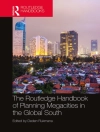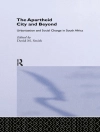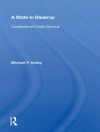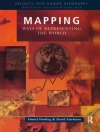This book is part of a five-volume set that explores sustainability in textile industry practices globally. Case studies are provided that cover the theoretical and practical implications of sustainable textile issues, including environmental footprints of textile manufacturing, consumer behavior, eco-design in clothing and apparels, supply chain sustainability, the chemistry of textile manufacturing, waste management and textile economics. The set will be of interest to researchers, engineers, industrialists, R&D managers and students working in textile chemistry, economics, materials science, and sustainable consumption and production.
This volume discusses novel trends and concepts in sustainable textile design, including innovative topics such as doodling and upcycling in clothing and apparel design for sustainable fashion initiatives. Along with strategies for repurposing fashion sustainability, the book also covers university interventions for the development of proper and environmentally friendly design practices. Specific technologies addressed include UV applications, laser treatments for dyeing, refined surface design techniques for products such as leather.Innehållsförteckning
Chapter1: Sustainable textile designs made from renewable biodegradable sustainable natural abaca fibers.- Chapter2: Analysis of zero waste patternmaking approaches for application to apparel.- Chapter3: Factors that affect sustainability in the textile design industry in Kadoma. Zimbabwe.- Chapter4: Contributions to sustainable textile design with natural textile design with natural raffia fibers.- Chapter5: Innovative sustainable apparel design: Application of CAD and redesign process.- Chapter6: Bacteria working to create sustainable textile materials and textile colorants leading to sustainable textile design.- Chapter7: Sustainable clothing designs for fashion– Design strategies and its implementation possibilities.- Chapter8: Contribution of UV technology to sustainable textile production and design.- Chapter9: Repurposing design process.- Chapter10: Doodlage: reinventing fashion vis sustainable design.- Chapter11: Sustainability in textile design with laser technology.- Chapter12: University intervention in inculcating design practices for sustainable fashion
Om författaren
Dr. Subramanian Senthilkannan Muthu currently works for Sg T Group as Head of Sustainability, and is based out of Hong Kong. He earned his Ph D from The Hong Kong Polytechnic University, and is a renowned expert in the areas of Environmental Sustainability in Textiles & Clothing Supply Chain, Product Life Cycle Assessment (LCA) and Product Carbon Footprint Assessment (PCF) in various industrial sectors. He has five years of industrial experience in textile manufacturing, research and development and textile testing and seven years of experience in life cycle assessment (LCA), carbon and ecological footprints assessment of various consumer products. He has published more than 75 research publications, written numerous book chapters and authored/edited multiple books in the areas of Carbon Footprint, Recycling, Environmental Assessment and Environmental Sustainability.
Miguel Angel Gardetti (Ph.D.), founded the Centre for Study of Sustainable Luxury, first initiative of its kind in the world with an academic/research profile. He is also the founder and director of the “Award for Sustainability in the Universe of Luxury in Latin America”. For his contributions in this field, he was granted the “Sustainable Leadership Award (academic category), ” in February, 2015 in Mumbai (India).
He is an active member of the Global Compact in Argentina –which is a United Nations initiative-, and was a member of its governance body –the Board of The Global Compact, Argentine Chapter – for two terms. He was also part of the task force that developed the “Management Responsible Education Principles” of the United Nations Global Compact. This task force was made up of over 55 renowned academics worldwide pertaining to top Business Schools.












